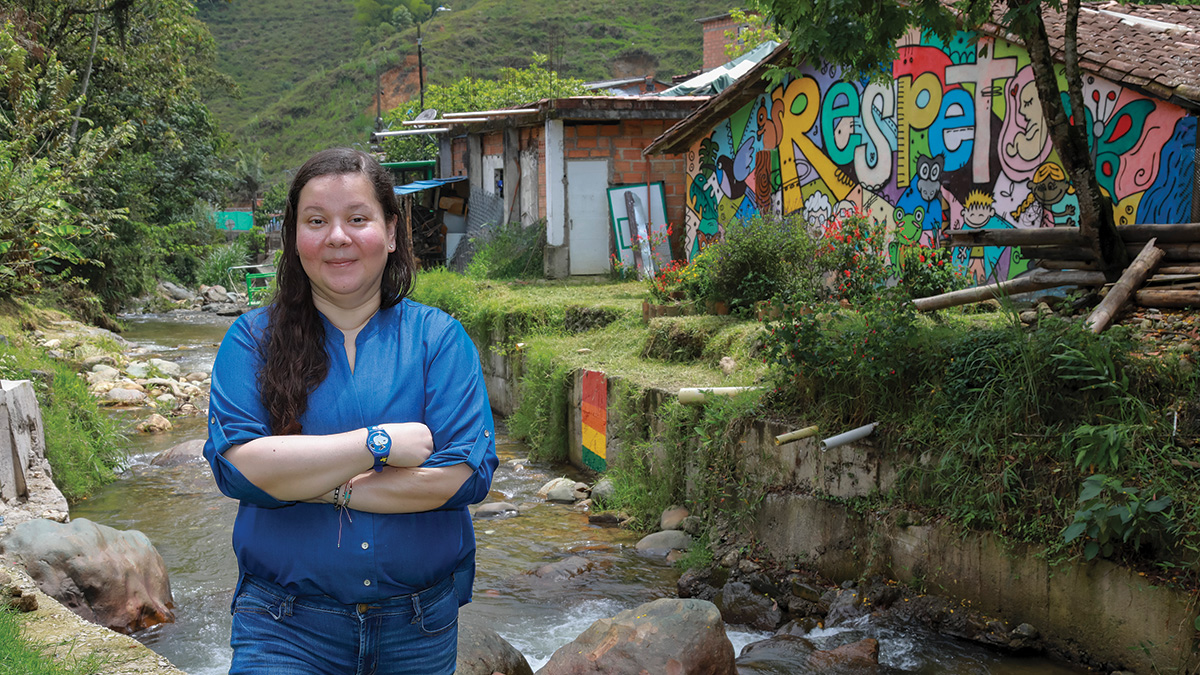Lina Ceballos-Bonilla’s mother always joked that her daughter had her head in the clouds. And she wasn’t wrong.
Ceballos-Bonilla earned bachelor’s and master’s degrees in engineering from the Universidad Nacional de Colombia at Medellín. Then an interest in atmospheric and numerical modeling took her to the United States, where she earned a second master’s degree in atmospheric sciences from the Georgia Institute of Technology (Georgia Tech) in the United States.
“Then I started pursuing a career in the clouds,” Ceballos-Bonilla said laughing.
Her coadviser at Georgia Tech, Colombian atmospheric scientist Carlos D. Hoyos, talked about setting up a group in Medellín to reduce the effects of natural disasters and asked Ceballos-Bonilla to consider working with him. “I always thought that I would like to go back to Colombia and apply all the things that I have learned,” Ceballos-Bonilla said. After graduating, she returned to Medellín.
So began the Early Warning System of Medellín and the Aburrá Valley (SIATA) project, aimed at providing early warnings of flash floods. Ceballos-Bonilla’s initial role was to determine the hazard, and that started with looking at what atmospheric conditions might lead to flooding.
“When I see the result of our work on communities, that’s when I realize that this really matters and is what I want to do.”
Coordinating the project’s ever growing scope has required Ceballos-Bonilla to draw on her science and engineering background and be flexible and adaptable. She has continued to do scientific research, but the real reward for her now is seeing the direct effects of the project.
“I’m a technical girl. I like the science still,” Ceballos-Bonilla said. “But when I see the result of our work on communities, that’s when I realize that this really matters and is what I want to do.”
Ceballos-Bonilla hopes that SIATA’s system can serve as a model for early-warning systems in other Colombian cities and elsewhere.
Although she still studies clouds, even her mother sees that her work has real, down-to-Earth effects. “It is exciting, as it is science in action,” Ceballos-Bonilla said. “And you get to see the results.”
—Jane Palmer (@TJPalmerWrites), Science Writer
This profile is part of a special series in our August 2024 issue on science careers.


